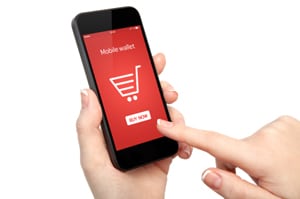 All kinds of merchants are doing a fantastic job on mobile. Look at the smartphone experience offered by Starbucks, for example, or the way that Lululemon goes mobile first and promotes local events that get people walking into its stores. Mobile represents a challenge, but it’s also a huge opportunity.
All kinds of merchants are doing a fantastic job on mobile. Look at the smartphone experience offered by Starbucks, for example, or the way that Lululemon goes mobile first and promotes local events that get people walking into its stores. Mobile represents a challenge, but it’s also a huge opportunity.
Mobile should be more than an important component of your sales strategy — it should be your top priority. By 2016,Deloitte estimates that $689 billion in sales will be influenced by mobile, more than double the desktop e-commerce equivalent. On Black Friday 2013, mobile salessurged 43% from 2012, and this is a trend that isn’t going to slow down.
Our smartphones are the pocket PCs we take everywhere, and their influence is going to explode exponentially.Eighty-seven percent of American adults own a cell phone, and 31% own a tablet. Your potential customers are using their mobile devices at every point of the shopping experience — from initial ideas to further research to the store itself, people are using their phones for just about everything. How do you tap into this ubiquity to increase retail sales?
Change your mindset
Mobile is not a tactic to add on to your marketing strategy: It needs to inform everything you do. Nearly40% of all emails are opened on a smartphone or a tablet, and mobile accounted for more than 15% of total Web traffic in 2013. Not having a mobile strategy is like closing your store one day a week. Can you afford the loss in business?
Build for mobile
According toresearch from Canalys, tablet sales will outstrip PC sales in 2014. Where does that leave your retail site if it can’t be viewed on a smaller screen? Too many businesses treat responsive Web design as an optional extra, but it should be the other way around. In the very near future, there are going to be more people viewing your store on a mobile device than on a traditional Web browser. Build the small-scale website first, and then move on to the desktop experience.
Leverage your relationships
Brands are paying you to get their stuff in front of customers and generate sales. Think about ways you can use digital marketing to drive in-store sales. From easy social media sharing buttons (e.g., Pinterest) to cross-platform campaigns (such as theDerrick Rose promotion Adidas ran on Twitter), there are plenty of opportunities to strike a deal.
Get people inside stores
It sounds obvious; in fact, it might be so obvious you’re ignoring it. How are you getting potential customers to your store once they’re on your mobile site? Think about contextual offers, links to local outlets, coupons for discounts, and other appetizers. The average e-commerce conversion rate is hovering around 4%, but chances are your in-store conversion rate is a lot higher. Get people to the point where they’re more likely to make a purchase.
Start testing the future
Even when you’re up to speed with e-commerce, social media, and mobile, don’t stop there. How can you make your stores even better? Consider in-store beacons and analytics from services like Nomi. Could in-store pickups from Amazon work for you? At the same time, don’t forget that the social experience of shopping and interacting with real human beings is a fundamental part of the attraction for many customers.
Anthony Nicalo is the CEO ofDónde, a tool for marketers that drives retail sales by connecting mobile users looking to buy with retail locations through contextual ads, coupons, and other offers.